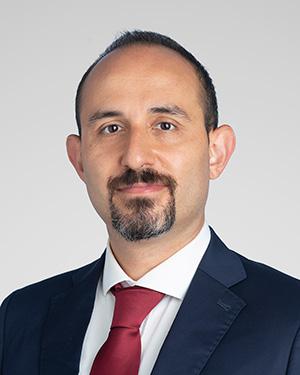Research News
11/12/2025
Cleveland Clinic researchers building deep learning model to assess central nervous system changes in glioblastoma
Building on promising early data, a Cleveland Clinic team secured funding to jump start their project on how we assess glioblastoma’s progression and potential injury to the brain.

Cleveland Clinic researchers are seeking to diagnose glioblastoma and assess progression earlier by understanding how brain activity and behavior are affected in the cancer’s earliest stages.
Glioblastoma can cause neurological symptoms such as changes to behavior, balance and motor function. These changes can be subtle and go unnoticed until the cancer progresses. Murat Yildirim, PhD, and his team are collecting preclinical data to see whether monitoring changes to pupil size, facial movements and walking patterns can reveal early signs of glioblastoma.
The initial stages of the project include funding from a Case Comprehensive Cancer Center Jump Start Pilot project grant, designed to support outstanding junior, independent faculty and accelerate their progression to further funding. The American Brain Tumor Association (ABTA) also recently supported the project with a 2025 Research Discovery grant. Dr. Yildirim is working with Justin Lathia, PhD, whose lab focuses on developing new therapeutic approaches to glioblastoma. Dr. Lathia is Dr. Yildirim’s mentor for the ABTA grant.
Glioblastoma affects neural oscillation, altering the rhythmic brainwaves linked to electrical activity in our brains. Monitoring minute changes to these oscillations, as well as changes in eye, face and body movements, is critical to disease detection but requires a high volume of data. Using this data, Dr. Yildirim’s team is training a deep learning model that can assess how far the glioblastoma has progressed.
“Right now, a lot of the assessment of potential early signs of glioblastoma based on activity or behavior are subjective. What we’re seeking to do is design an objective measure that can gauge the early impacts and the effectiveness of any therapeutics,” Dr. Yildirim explains.
He added that measures like pupil dilation can change day by day in preclinical models, which is a level of detail necessary to intercept the cancer early enough to prevent any damage. Dr. Yildirim’s team is also assessing how using light to manipulate neurons can target brain activity that has been altered, potentially restoring function or typical behavior.
“Right now, a patient will often find out that they have a brain tumor after seeking care for these neurological symptoms,” Dr. Yildirim says. “By gathering this information and testing these interventions, we’re building a comprehensive understanding of how minute changes to facial, body and eye movements correlate with these changes to the brain. That gives us a so-called ‘recipe’ for future screening strategies and therapeutics.”
Featured Experts
News Category
Related News
Research areas
Want To Support Ground-Breaking Research at Cleveland Clinic?
Discover how you can help Cleveland Clinic save lives and continue to lead the transformation of healthcare.
Give to Cleveland Clinic